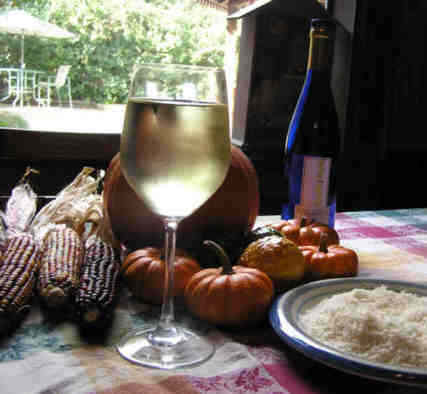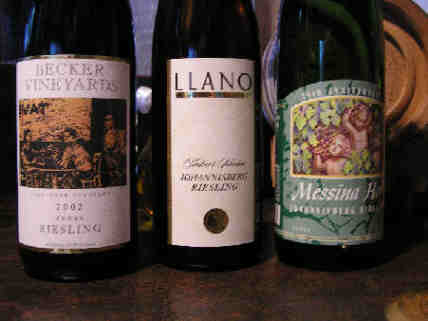
With Riesling everything the vine has experienced in the vineyard can be sensed in a single glass of wine.
|
RIESLING REVIVAL Thomas M. Ciesla page 2 of 4
Back in the 1970s when my refrigerator usually held wines with names like Blue Nun, Piesporter and Liebfraumilch. Sweet and cheap these wines were approachable to the immature palate and served as an entry point into the world of wine. In a sense, these wines were the precursor of todays 'white zinfandel'. Sadly, the stigma of sweet and cheap has lingered for decades regarding these brands: when you say 'German wine' to most folks, it's these three wines that pop into mind. Though the Riesling grape is sometimes used in the production of these wines (more often it's Syrvaner), this category of wine has little to do with a true Riesling.
The Riesling (pronounced reeez-ling) grape, also known as Johannisberg Riesling, White Riesling, Weisser Riesling, Rheinriesling and Riesling Renano, has been grown in Germany's Rhine and Mosel Valleys since the 14th century. It is the most planted grape in the Rhine Valley: people who talk about a 'Rhine Wine' are talking about a Riesling. It has also been the dominant grape in the Alsace region of France, and these two countries have come to define how a Riesling should be grown and produced. Known as the noblest of the noble grapes, Riesling wines were also popular in England over the centuries; so popular in fact, that the wine found its way into literature. In Hamlet, the wine that the Danish court gets drunk on is a 'Rhine Wine."
TERROIR!
One distinguishing fact about the Riesling grape is that it can produce wines across the entire spectrum of style, from a dusty dry, almost flinty, to a magnificent sweet nectar. This Riesling chain is a celebration of a winemakers vision and restraint. Rieslings superiority over other grapes stems from its late ripening cycle, allowing it the time to extract the minerals and trace elements in the soil, giving full expression to the terroir. Everything the vine has experienced in the vineyard can be sensed in a single glass of wine.
While it is true that other wines can express terroir with uncanny precision, their character is often altered by oak treatment. This isn't the case with Riesling, where new oak plays no part in its production, though European winemakers will use older, neutral oak in 1,000 liter oval casks to finish the wine. The typical low alcohol levels of riesling also helps to allow the nuances of the vineyard to be expressed.
With the approach of autumn, Riesling (above) makes a perfect partner on the Thanksgiving day table.
Three Texas Rieslings are shown on the left.
|


